Croton plants are known for their vibrant, colorful leaves, which is why it can be so frustrating when your croton’s leaves start to droop. There are a few reasons why this might happen, but luckily, there are also a few easy solutions. In this article, we’ll discuss why your croton’s leaves might be drooping and how you can fix the problem.
Is It Normal for A Croton to Droop?
Drooping leaves on a croton plant are not necessarily a cause for alarm. Many times, crotons will droop after being transplanted or if they are not getting enough water. However, if the leaves are drooping and the plant looks unhealthy, it could be a sign of a more serious problem.
Check to see if the roots are dry or if the plant is getting too much or too little water. If the leaves don’t perk up within a day or two, there could be a problem with the roots. If you think your croton is drooping because it needs more water, try giving it a good watering.

If the leaves don’t improve within a week or two, the plant may be too far gone and you may need to start over with a new one. If you think your croton is drooping because it is not getting enough light, try moving it to a brighter location.
Reasons for Croton Dropping
If your Croton’s leaves are drooping, it’s likely due to one of the following reasons:
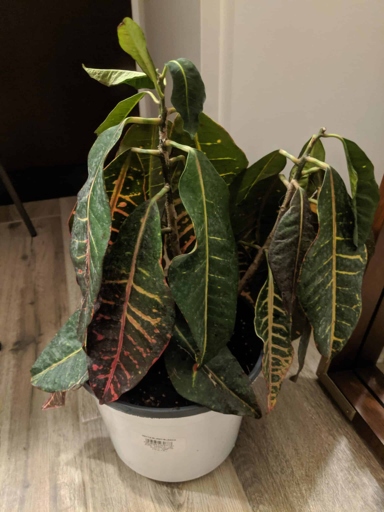
Not enough water. If the soil is dry, the leaves will droop. Crotons are native to tropical climates and need regular watering to thrive. 1.
Too much sun. Crotons need bright, indirect light to prosper. If they’re in direct sunlight for too long, the leaves will droop. 2.
If the air is too dry, the leaves will droop. 3. Crotons prefer humid conditions. Not enough humidity.
Crotons like warm temperatures and will suffer if they’re too cold or too hot. 4. If the leaves are drooping due to temperature stress, they will usually recover once the temperature is corrected. Temperature stress.
If your Croton’s leaves are drooping, try to identify the cause and take corrective action. With proper care, your Croton should soon be back to its healthy, vibrant self.
[1] Underwatering (Extremely Dry Soil)
If your Croton’s leaves are drooping, it’s likely a sign of underwatering. To fix the problem, water your Croton deeply and regularly, making sure the soil is moist but not soggy. The soil should be moist, but not soggy, and allowed to dry out slightly between watering. If the soil is extremely dry, the leaves will droop and the plant may wilt.
Solution
If your Croton’s leaves are drooping, it is likely due to one of three things: too much water, not enough water, or too much sun.

If you think your Croton is getting too much water, the first step is to check the drainage. If the drainage is good, then you may be watering your Croton too often. Cut back on watering and see if the leaves start to perk up.
If the leaves are still drooping, you may need to water it more deeply. Stick your finger into the soil to see how dry it is. If you think your Croton is not getting enough water, water it more frequently. If the soil is dry several inches down, then your Croton needs a deep watering.
If you think your Croton is getting too much sun, try moving it to a shadier spot. If the leaves are still drooping, you may need to provide more protection from the sun, such as by putting up a shade cloth.
[2] Overwatering
Overwatering can cause the leaves to turn yellow and drop off. If your Croton’s leaves are drooping, it is likely due to overwatering. It can also lead to root rot. This can happen if you water too often or if you allow the soil to stay too wet.

Be sure to water only when the soil is dry to the touch. If the leaves are still drooping, you may need to repot the plant in fresh, dry soil. Allow the soil to dry out between waterings. If you think you are overwatering your Croton, the first step is to cut back on watering.
Solution
If you’re wondering why your Croton’s leaves are drooping, there are a few possible explanations. If it is, water the plant thoroughly until the water runs out of the drainage holes. The most common reason is that the plant is not getting enough water. Make sure to check the soil before watering to see if it’s dry.
If your plant is in a spot that gets direct sunlight, move it to a shadier spot. Another possible reason for drooping leaves is that the plant is getting too much sun. Crotons need bright, indirect light to thrive.
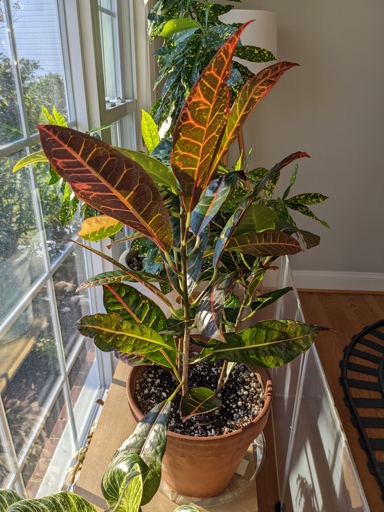
If you think your Croton might be suffering from a pest infestation, check the leaves for signs of pests and treat accordingly. If you’ve ruled out both of these possibilities, it’s possible that your Croton is suffering from a nutrient deficiency. Make sure you’re fertilizing your plant regularly with a good all-purpose fertilizer.
[3] Low Humidity
Crotons are native to tropical regions and need high humidity to thrive. If you notice your Croton leaves drooping, it’s likely due to low humidity. If you live in a dry climate, you can increase the humidity around your Croton by placing it on a pebble tray or using a humidifier.
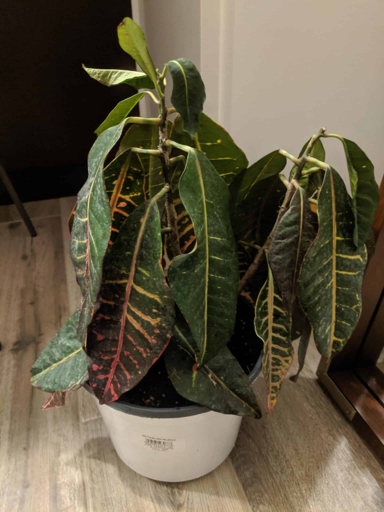
Place your Croton on the pebbles, making sure the pot isn’t sitting in the water. To create a pebble tray, simply fill a shallow dish with pebbles and water. The evaporating water will increase the humidity around your plant.
Just be sure to keep an eye on the level of humidity, as too much can be just as harmful as too little. Place the humidifier near your Croton and turn it on to help increase the humidity. If you have a larger Croton or live in a particularly dry climate, you may need to use a humidifier.
Solution
If your Croton’s leaves are drooping, it’s likely due to one of three things: too much sun, too little water, or too much fertilizer. Here are a few solutions to try:
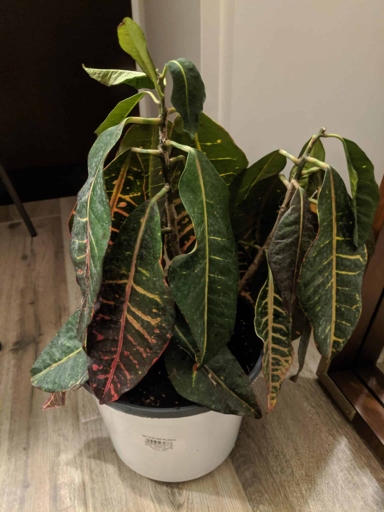
If it’s getting too little water, water it more frequently. And if you think you may be over-fertilizing your Croton, cut back on the fertilizer. If your Croton is getting too much sun, move it to a shadier spot.
With a little trial and error, you should be able to find the perfect solution for your drooping Croton leaves.
[4] Loss of Turgor Pressure
There are a few things that can cause this to happen, including too much or too little water, too much or too little light, and even pests. One of the most common problems with croton plants is that their leaves start to droop. This is usually caused by a loss of turgor pressure, which is the pressure that keeps leaves upright.

If the soil is too wet, then you will need to let it dry out a bit. If you think that your croton plant is drooping because of a loss of turgor pressure, the first thing you should do is check the soil. You can also try moving your plant to a spot that gets more or less light, depending on what it is currently getting. If it is dry, then you will need to water your plant.
You will need to inspect your plant carefully to look for any signs of pests. If you have tried all of these things and your plant is still drooping, then it is possible that there is a pest problem. If you find any, you will need to treat your plant accordingly.
Solution
If your Croton plant’s leaves are drooping, it is likely due to one of three reasons: too much sun, too little water, or too much fertilizer. Each of these can be easily fixed with a little bit of care.
If your plant is in direct sunlight for more than six hours a day, the leaves will start to droop. Move the plant to a spot that gets indirect sunlight and the leaves should perk up within a few days. Too much sun is the most common reason for Croton leaves to droop.
Too little water is another common reason for Croton leaves to droop. Water the plant deeply once a week and the leaves should start to perk up within a few days. The leaves will start to droop if the soil is dry and the plant is not getting enough water.
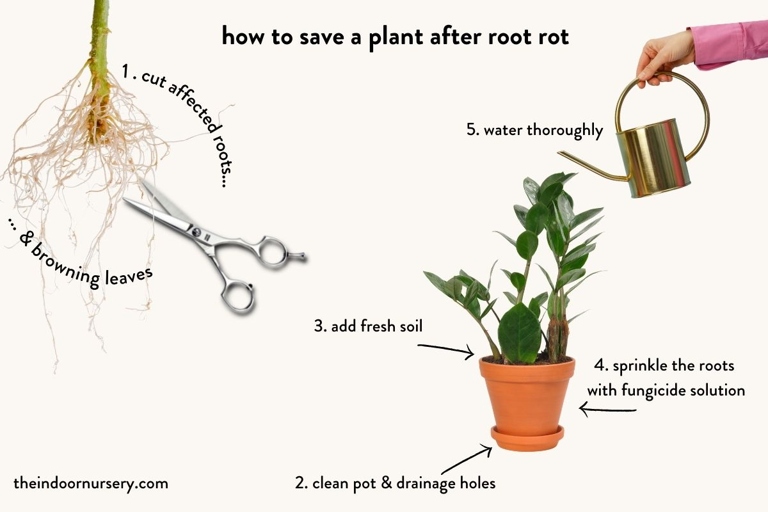
If you have been fertilizing your plant more than once a month, the leaves will start to droop. Cut back on the fertilizer and the leaves should start to perk up within a few days. Too much fertilizer is the third common reason for Croton leaves to droop.
[5] Over-Temperature and Extreme Cold
If the air is too hot or too cold, the leaves will start to droop. This is because the leaves are not able to regulate their own temperature, so they rely on the temperature of the air around them. When the temperature outside gets too hot or too cold, your Croton leaves will start to droop.
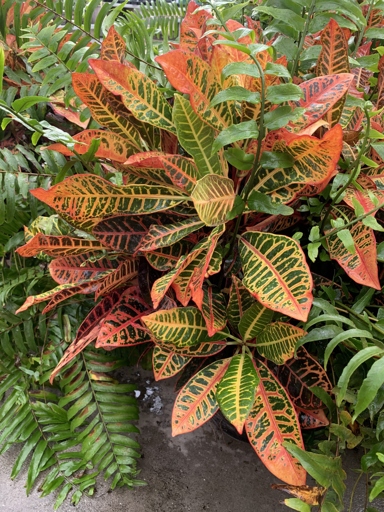
You can also mist your plant with water to help keep the leaves cool. If the leaves are drooping because of too much or too little water, they will start to recover once you adjust your watering schedule. There are a few things you can do to help your Croton leaves when the temperature gets too extreme. Finally, make sure you are not over- or under-watering your Croton. First, you can move your plant to a spot that is more protected from the sun or wind.
Solution
If you think your Croton is thirsty, give it a good drink and see if the leaves perk up within a day or two. If they don’t, then it’s possible that your Croton is getting too much water. There are a few things that could be causing your Croton leaves to droop. The most common culprit is too much or too little water. If it is, you may need to repot your Croton with fresh, dry soil. Check the drainage in your pot and make sure the soil isn’t soggy.
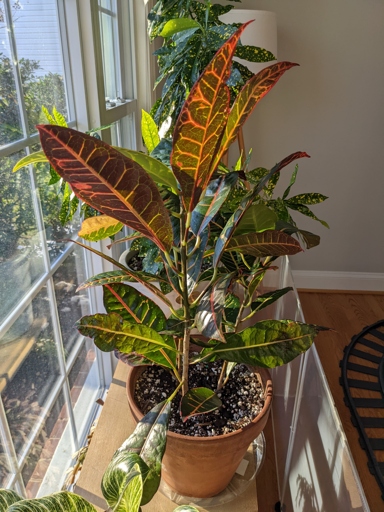
Try misting your plant daily or placing it on a pebble tray to raise the humidity around it. Crotons like humid conditions, so if your home is on the dry side, your Croton may be suffering. Another possible reason for drooping leaves is low humidity.
Move it to a spot with indirect light and see if the leaves start to perk up. Finally, if your Croton is getting enough water and humidity but its leaves are still drooping, it may be getting too much direct sunlight.
[6] Water Quality (Tap Water)
If the tap water is high in chlorine or other chemicals, it can cause the leaves to droop and the plant to become unhealthy. To fix this problem, use filtered or distilled water to water your Croton plant. One of the most common problems with Croton plants is water quality.
Solution
Croton leaves may droop for a variety of reasons, including too much or too little water, too much or too little light, or even a nutrient deficiency. But don’t worry, there are solutions for each of these problems!
If your croton is getting too much water, the leaves will start to droop and the plant will become limp. The solution is to water your croton less frequently, making sure the soil has a chance to dry out between waterings.
The solution is to water your croton more frequently, making sure the soil stays moist but not soggy. If your croton is not getting enough water, the leaves will also droop and the plant will wilt.
If your croton is getting too much light, the leaves will turn yellow and then brown and drop off. The solution is to move your croton to a spot that gets less light.
The solution is to move your croton to a spot that gets more light. If your croton is not getting enough light, the leaves will turn a pale green and the plant will stretch out and become leggy.

The solution is to fertilize your croton with a balanced fertilizer. If your croton has a nutrient deficiency, the leaves will turn yellow or brown and drop off.
[7] How Much Light Is It Getting?
If the plant isn’t getting enough light, the leaves will start to droop. This is because the plant is trying to reach for the light, which causes the leaves to droop. When it comes to croton plants, the amount of light it receives is very important.
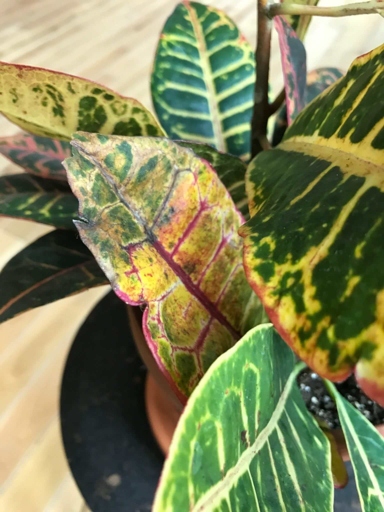
If you can’t do that, then you can try using a grow light. To fix this problem, you need to move the plant to a location that gets more light. They can be very helpful in getting your croton plant the light it needs. Grow lights are artificial lights that mimic the sun’s rays.
Solution
The first step is to check the soil to see if it is dry. If the drainage is good and the soil is moist, your Croton may be getting too much sun. Move it to a spot with less direct sunlight. If your Croton’s leaves are drooping, it is likely due to a lack of water. If it is, water your Croton deeply, making sure to soak the roots. If the roots are too wet, they will rot. If the soil is moist, you may need to check the drainage to make sure the roots are not sitting in water.
[8] Sudden Movement (Change of Location)
There are a few possible reasons for this, including sudden movement. Croton plants are known for their vibrant, colorful leaves. But what happens when those leaves start to droop?
The leaves may droop as the plant tries to adjust to its new surroundings. This is especially true if the plant was moved from a shady spot to a sunny one, or vice versa. When a croton plant is moved, it can go into shock. If you think your croton has been moved too much, try to give it a few days to adjust before moving it again.
If the soil is dry, give the plant a good drink and see if the leaves perk back up. Another reason for drooping leaves could be that the plant is not getting enough water. Make sure to check the soil before watering, as crotons don’t like to be over-watered.
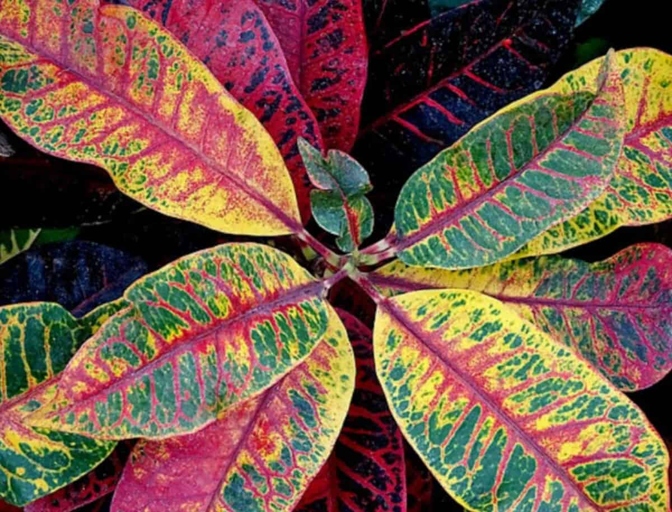
There could be a more serious issue at play, such as a nutrient deficiency. If your croton’s leaves are still drooping after a few days, it’s best to consult a professional. A professional can help you diagnose the problem and get your croton back to its vibrant self.
Solution
Allow the soil to dry out slightly in between waterings. The first step is to check the soil to see if it is dry. If it is, water your Croton deeply, making sure to saturate the root ball. If your Croton’s leaves are drooping, it is likely due to a lack of water.
If you find that your Croton is still drooping after watering, it may be due to a lack of light. If your Croton is not getting enough light, move it to a brighter spot. Crotons need bright, indirect light to thrive.

If you see these signs, fertilize your Croton with a balanced fertilizer. Inspect the leaves for signs of yellowing or browning. If you have followed these steps and your Croton is still drooping, it is likely due to a nutrient deficiency.
[9] Insect Infestation
These pests can suck the sap out of the leaves, causing them to wilt and turn yellow. If you’re noticing your Croton leaves drooping, it could be due to an insect infestation. If you see any, you’ll need to take action to get rid of them. If you suspect an infestation, check the undersides of the leaves for small, brownish bugs.
Start by spraying the plant with an insecticidal soap or neem oil. You may need to apply the treatment a few times to completely get rid of the pests. The good news is that there are a few simple things you can do to get rid of insects on your Croton. You can also try using a horticultural oil, but be sure to read the label carefully to make sure it’s safe for use on Crotons.
And always follow the directions on the label carefully. If you have a severe infestation, you may need to resort to using chemical pesticides. But be sure to use them sparingly, as they can be harmful to both people and pets.

With a little effort, you can get rid of insects on your Croton and keep your plant healthy and looking its best.
Solution
Another common cause is too much sun or wind, which can cause the leaves to dry out and turn brown. If the leaves are drooping and the plant is not getting enough water, then give it a good watering and make sure to water it regularly. This can be fixed by allowing the soil to dry out completely between watering. This can be fixed by moving the plant to a shadier location. The most common cause is overwatering, which can lead to root rot. Croton leaves drooping is a common problem that can be caused by several different factors.
[10] Diseases
The fungus can also spread to the stem and leaves, causing them to turn yellow and eventually drop off. There are a number of diseases that can cause your croton leaves to droop. One of the most common is called root rot. This disease is caused by a fungus that attacks the roots of the plant, causing them to rot.
This disease is caused by a number of different fungi and bacteria that attack the leaves of the plant, causing them to turn brown and eventually drop off. Another disease that can cause your croton leaves to droop is called leaf spot.

This disease is caused by a fungus that attacks the stem of the plant, causing it to rot. Finally, a disease called stem rot can also cause your croton leaves to droop. The fungus can also spread to the leaves, causing them to turn yellow and eventually drop off.
Solution
If the leaves are yellowing or browning in addition to drooping, the plant may have a nutrient deficiency. If you have a croton that’s drooping, there are a few things you can do to try to revive it. If it is, water the plant thoroughly. Try fertilizing it with a plant food that’s high in nitrogen. If the leaves are still drooping after you’ve watered and misted the plant, it may be getting too much sun. First, check the plant’s soil to see if it’s dry. You can also try misting the leaves with water to see if that helps. Try moving it to a spot that’s out of direct sunlight.
[11] Fertilizer Application Mistake
If you see leaves drooping, it’s important to stop fertilizing and water the plant more frequently. This can lead to a number of problems, including leaf drop. When leaves droop, it’s a sign that the plant is not getting enough water. This can be caused by over-fertilizing, which can lead to the roots being burned. One of the most common mistakes when it comes to fertilizer application is using too much of it.
Solution
The first step is to check the soil to see if it is dry. If the roots are waterlogged, you will need to improve the drainage before watering your Croton again. If it is, water your Croton deeply, making sure the water reaches the roots. If the soil is moist, you may need to check the drainage to make sure the roots are not waterlogged. If your Croton’s leaves are drooping, it is likely due to a lack of water.

If the leaves are drooping due to waterlogged roots, improve the drainage of the soil and make sure not to water your Croton too often. Once you have determined the cause of the drooping leaves, you can take steps to fix the problem. If the leaves are drooping due to a lack of water, make sure to water your Croton regularly and deeply. With a little care, your Croton will soon be looking healthy and vibrant again.
Final Words
Your croton leaves are drooping because they’re not getting enough water. The leaves will start to droop when the soil is dry and the plant is stressed.
To fix the problem, water your croton deeply and regularly. Water the plant in the morning so the leaves have time to dry before nightfall. Make sure the soil is moist but not soggy.
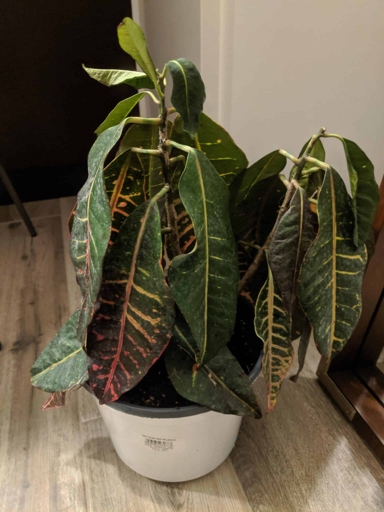
If your croton is still drooping, it may need more water. Check the soil every few days and water as needed. In hot weather, you may need to water your croton daily.
Water the plant when the soil is dry and give it a deep drink every week or two. Once your croton is healthy and the leaves are no longer drooping, you can cut back on watering.
Frequently Asked Questions
1. Why are my Croton leaves drooping?
There are several reasons why your Croton leaves may be drooping. The most common reason is that the plant is not getting enough water. Crotons are native to tropical regions and need to be kept moist at all times. If the leaves are wilting and falling off, it is a sign that the plant is stressed and needs more water.
Another reason for drooping leaves can be too much direct sunlight. Crotons need bright light to thrive, but too much direct sun can cause the leaves to droop. If you notice that the leaves are drooping after being in direct sunlight, try moving the plant to a shadier spot.
2. How often should I water my Croton?
It is best to water your Croton once a week, allowing the soil to dry out slightly between waterings. If the leaves are drooping, it is a sign that the plant needs more water. Try increasing the frequency of your waterings to see if that helps the plant recover.
3. What type of soil is best for Crotons?
Croton plants prefer a well-draining, slightly acidic soil. If your soil is too heavy or clay-like, it can cause the roots to rot. If you are not sure about the quality of your soil, you can get it tested at your local nursery or cooperative extension office.
4. What is the best way to fertilize Crotons?
Croton plants need to be fertilized every few weeks during the growing season. Use a balanced fertilizer that is low in nitrogen and higher in phosphorus and potassium. Slow-release granular fertilizers are a good option for Crotons.
5. How can I tell if my Croton is getting too much or too little light?
If your Croton is getting too much light, the leaves will start to turn yellow and then brown and fall off. If your Croton is not getting enough light, the leaves will be small and pale green. The best way to determine how much light your Croton needs is to observe the plant and adjust the amount of light it is getting accordingly.
Final thoughts
There are a few reasons your Croton leaves might be drooping. The most common reason is that the plant is not getting enough water. Make sure to water your Croton regularly and check the soil to see if it is dry. If the soil is dry, water the plant and wait a few hours to see if the leaves perk up. If the leaves do not perk up, the plant may be getting too much sun. Move the plant to a shadier spot and see if the leaves improve. If the leaves are still drooping, the plant may have a nutrient deficiency. Fertilize the plant and see if the leaves improve.
